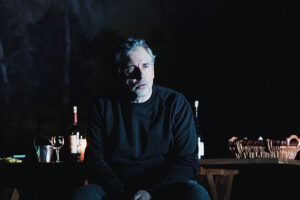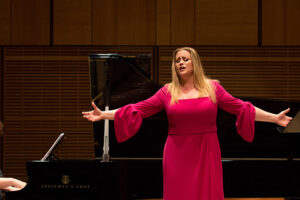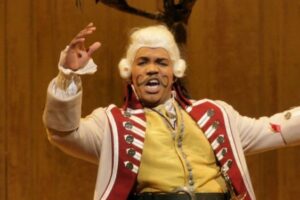

To recap on the Fidelio origin story: in 1803 the 30-something Beethoven agreed to compose a new opera for impresario Emanuel Schikaneder, moving into new lodgings at his then-suburban Theatre an der Wien. After dispensing with Schikaneder’s suggested libretto, Beethoven set his sights on a trendy French property by Jean-Nicolas Bouilly, Leonore, ou l’amour conjugal, a work that aligned neatly with Beethoven’s revolutionary sensibilities while feeding Vienna’s hunger for the rescue drama.
The work, entitled Leonore (though always advertised as Fidelio), had a demoralizing premiere in 1805 on the eve of the battle of Austerlitz, with French troops still occupying Vienna. The Theatre an der Wien was nearly empty except for French officers; regular theatregoers had either fled or stayed home. Beethoven’s circle soon encouraged him to move past the premiere and revise the work, and a significantly altered version was presented the following year. More revisions would follow until the 1814 Fidelio, which now occupies a permanent place in the regular repertory.
Probably the most attractive feature of the original is a streamlined ending. Where the 1814 version does the responsible thing dramatically, changing the scene back to the prison yard and trying to wrap up some loose ends, the 1805 version just stays in the dungeon and gives us what we really want: an extra long, delightfully noisy, rather thrilling set piece that pits orchestra, huge ensemble, and chorus against each other.
Other highlights include a quieter first number for Florestan that seems more dank-cell appropriate than the heroic banger we usually hear, as well as an exuberant first draft of “O namenlose Freude” that includes lots of fun additional high notes for Fidelio/Leonore. A later-cut Act 1 duet for Leonore and Marzelline is pleasant and has some nice solo string writing but is largely irrelevant, while the more familiar later overture is a decided improvement over the 1805 entry.
WCO offered a formidable Leonore in Marjorie Owens, a former Met Council finalist who appeared in the company’s Guntram a few years back. Owens is very impressive in this music, cutting through the orchestra with a with gleaming upper register and easily handling the demands of the role.
New Zealander Simon O’Neill combines heldentenor heft with a pretty, pingy tone well-suited to the craggy beauty of Florestan’s music. After a sensitively phrased rendition of that alternate downtempo opening aria, he offered a bravura reading of Florestan’s big numbers. His and Owens’ rendition of “Namenlose Freude” was probably worth the price of admission alone.
Eric Halfvarson and Alan Held, two of the highlights of Washington National Opera’s Ring Cycle, had a happy reunion here. Halvorson’s warm, authoritative bass proved a good fit for the gruff yet tender Rocco, while Held’s typical intelligence and textual precision made for an unusually engaging Pizarro.
As the young lovers, soprano Celena Shafer offered a notably plush sound for Marzelline, while Jonas Hacker contributed a polished Jacquino. Nicholas Masters rounded out the principals with a resonant Don Fernando. The rewards of Leonore lie almost as much in the ensembles as the solo contributions, and the cast as a whole here turned in particularly beautiful, well-balanced readings of these sections.
Photo: Simon Pauly























Comments